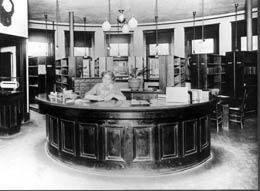
The reference desk or information desk of a library is a public service counter where professional librarians provide library users with direction to library materials, advice on library collections and services, and expertise on multiple kinds of information from multiple sources.

The Internet Archive is an American digital library founded on May 10, 1996, and chaired by free information advocate Brewster Kahle. It provides free access to collections of digitized materials including websites, software applications, music, audiovisual and print materials. The Archive also advocates for a free and open Internet. As of January 1, 2024, the Internet Archive says that it holds more than 41 million print materials, 8.4 million videos, 0.89 million software programs, 14.7 million audio files, 4.4 million images, 240,000 concerts, and over 735 billion web pages in its Wayback Machine. Its mission is to provide "universal access to all knowledge".

Digitization is the process of converting information into a digital format. The result is the representation of an object, image, sound, document, or signal obtained by generating a series of numbers that describe a discrete set of points or samples. The result is called digital representation or, more specifically, a digital image, for the object, and digital form, for the signal. In modern practice, the digitized data is in the form of binary numbers, which facilitates processing by digital computers and other operations, but digitizing simply means "the conversion of analog source material into a numerical format"; the decimal or any other number system can be used instead.
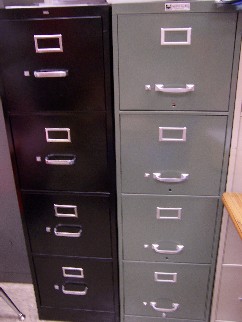
A filing cabinet is a piece of office furniture for storing paper documents in file folders. In the most simple context, it is an enclosure for drawers in which items are stored. The two most common forms of filing cabinets are vertical files and lateral files. A vertical file cabinet has drawers that extend from the short side of the cabinet. A lateral file cabinet has drawers that extend from the long side of the cabinet. These are also called side filers in Great Britain. There are also shelf files which go on shelves. In the United States, file cabinets are usually built to accommodate 8.5 × 11 paper, and in other countries, filing cabinets are often designed to hold other sizes of paper, such as A4 paper.
In library and archival science, digital preservation is a formal process to ensure that digital information of continuing value remains accessible and usable in the long term. It involves planning, resource allocation, and application of preservation methods and technologies, and combines policies, strategies and actions to ensure access to reformatted and "born-digital" content, regardless of the challenges of media failure and technological change. The goal of digital preservation is the accurate rendering of authenticated content over time.
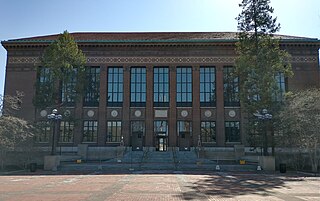
The Labadie Collection at the University of Michigan, originating from the collection of radical ephemera built by Detroit Anarchist Jo Labadie, is recognized as one of the world's most complete collections of materials documenting the history of anarchism and other radical movements from the 19th century to the present.
The Jewish Public Library or JPL is a public library in Montreal, Quebec, Canada, founded in 1914. The library contains the largest circulating collection of Judaica in North America. The JPL has close to 4000 members, and receives 700 to 800 visitors weekly. A constituent agency of Federation CJA, the Jewish Public Library is independent of the Montreal Public Libraries Network and instead receives its funding from the city's Jewish community, membership fees, donations and endowments.
A Uniform Type Identifier (UTI) is a text string used on software provided by Apple Inc. to uniquely identify a given class or type of item. Apple provides built-in UTIs to identify common system objects – document or image file types, folders and application bundles, streaming data, clipping data, movie data – and allows third party developers to add their own UTIs for application-specific or proprietary uses. Support for UTIs was added in the Mac OS X 10.4 operating system, integrated into the Spotlight desktop search technology, which uses UTIs to categorize documents. One of the primary design goals of UTIs was to eliminate the ambiguities and problems associated with inferring a file's content from its MIME type, filename extension, or type or creator code.

The conservation and restoration of vinyl discs refers to the preventive measures taken to defend against damage and slow degradation, and to maintain fidelity of singles, 12" singles, EP’s, and LP’s in 45 or 33⅓ rpm 10" disc recordings.

The Idaho State Historical Society (ISHS) is a historical society located in the U.S. state of Idaho that preserves and promotes the state's cultural heritage.
The Digital Accounting Collection (DAC) is part of the University of Mississippi Libraries. The collection contains both current and historical accounting materials, with over 2,400 items in digitized searchable full-text format, and over 33,000 bibliographic citations for other materials.
The Brenthurst Library is a private repository of Africana in Parktown, Johannesburg built by Harry Oppenheimer in 1984 as he started to disengage from the family's mining interests. It houses a collection of some 20,000 volumes, including rare manuscripts and documents. Among these were the only complete record of the proceedings of the treason trial of Nelson Mandela, until the papers were handed over to the Mandela estate in November 2008.
A digital library, also called an online library, an internet library, a digital repository, a library without walls, or a digital collection, is an online database of digital objects that can include text, still images, audio, video, digital documents, or other digital media formats or a library accessible through the internet. Objects can consist of digitized content like print or photographs, as well as originally produced digital content like word processor files or social media posts. In addition to storing content, digital libraries provide means for organizing, searching, and retrieving the content contained in the collection. Digital libraries can vary immensely in size and scope, and can be maintained by individuals or organizations. The digital content may be stored locally, or accessed remotely via computer networks. These information retrieval systems are able to exchange information with each other through interoperability and sustainability.
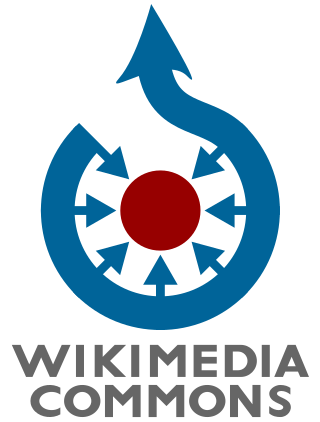
Wikimedia Commons is a media repository of free-to-use images, sounds, videos and other media. It is a project of the Wikimedia Foundation.
The New York University Archives has served, since 1977, as the final repository for the historical records of New York University (NYU), in Greenwich Village, New York, U.S. The NYU Archives contains documents, photographs or drawings collected since 1854, including records or notebooks of some notable people. It functions primarily to document the history of the university and to provide source material for administrators, faculty, students, alumni, and other members of the university community. The NYU Archives also accommodates scholars, authors, and other interested persons who seek to evaluate the impact of the university's activities on the history of American social, cultural and intellectual development.

The Presbyterian Historical Society (PHS) is the oldest continuous denominational historical society in the United States. Its mission is to collect, preserve and share the history of the American Presbyterian and Reformed tradition with the church and broader community. It is a department of the Office of the General Assembly of the Presbyterian Church (U.S.A.).
The David Lubin Memorial Library is the main library of the Food and Agriculture Organization of the United Nations (FAO). Its world-renowned collection consists of technical material related to food, nutrition, agriculture, forestry and fisheries, with emphasis on developing countries. The core of its historical collection is the library of the International Institute of Agriculture (IIA), whose assets were entrusted to FAO when the IIA was disbanded in 1946.
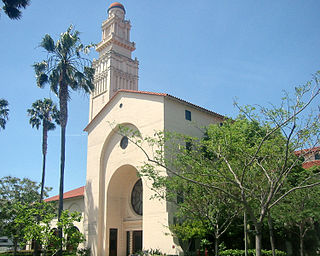
The Margaret Herrick Library, located in Beverly Hills, California, is the main repository of print, graphic and research materials of the Academy of Motion Picture Arts and Sciences (AMPAS). The library contains a digital repository and has historical materials that include those relating to the Oscars awards show.

The Thomas J. Watson Library is the main research library of the Metropolitan Museum of Art, and supports the research activities of the museum staff, as well as outside researchers. It is located in the Met's main building, The Met Fifth Avenue.
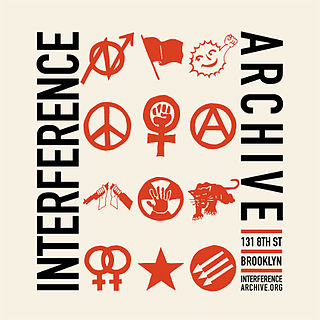
Interference Archive is a volunteer-run library, gallery, and archive of historical materials related to social and political activism and movements. Located in the Park Slope neighborhood of Brooklyn, New York City, at 314 7th Street, with in the zip code 11215, its mission is "to explore the relationship between cultural production and social movements."











